
The film version of Brian De Palma’s Carrie is an enduring horror masterpiece, yet viewers may find themselves pondering the surprising denouement. As Stephen King’s inaugural novel published in 1974, Carrie immediately garnered widespread acclaim and success. The subsequent movie adaptation in 1976 catapulted King into even greater fame and established him as a sought-after writer in Hollywood for decades to come. Despite being nearly half a century old, Carrie remains impactful, continuing to startle and captivate audiences today.
Carrie, directed by Brian De Palma, stands out as one of his best films due to a compelling portrayal by Sissy Spacek, an eerie ambiance, and a shocking finale. De Palma masterfully adapts Stephen King’s acclaimed novel, making slight adjustments that he feels are necessary. Despite King expressing disapproval of some film adaptations, he has only ever expressed admiration for De Palma’s Carrie. Over the years, there have been other adaptations and a new one by Mike Flanagan is on its way, but De Palma’s original version remains the most well-liked and critically acclaimed.
What Happens In Carrie’s Ending
The Bloodbath At The Prom Finally Sees Carrie Snap
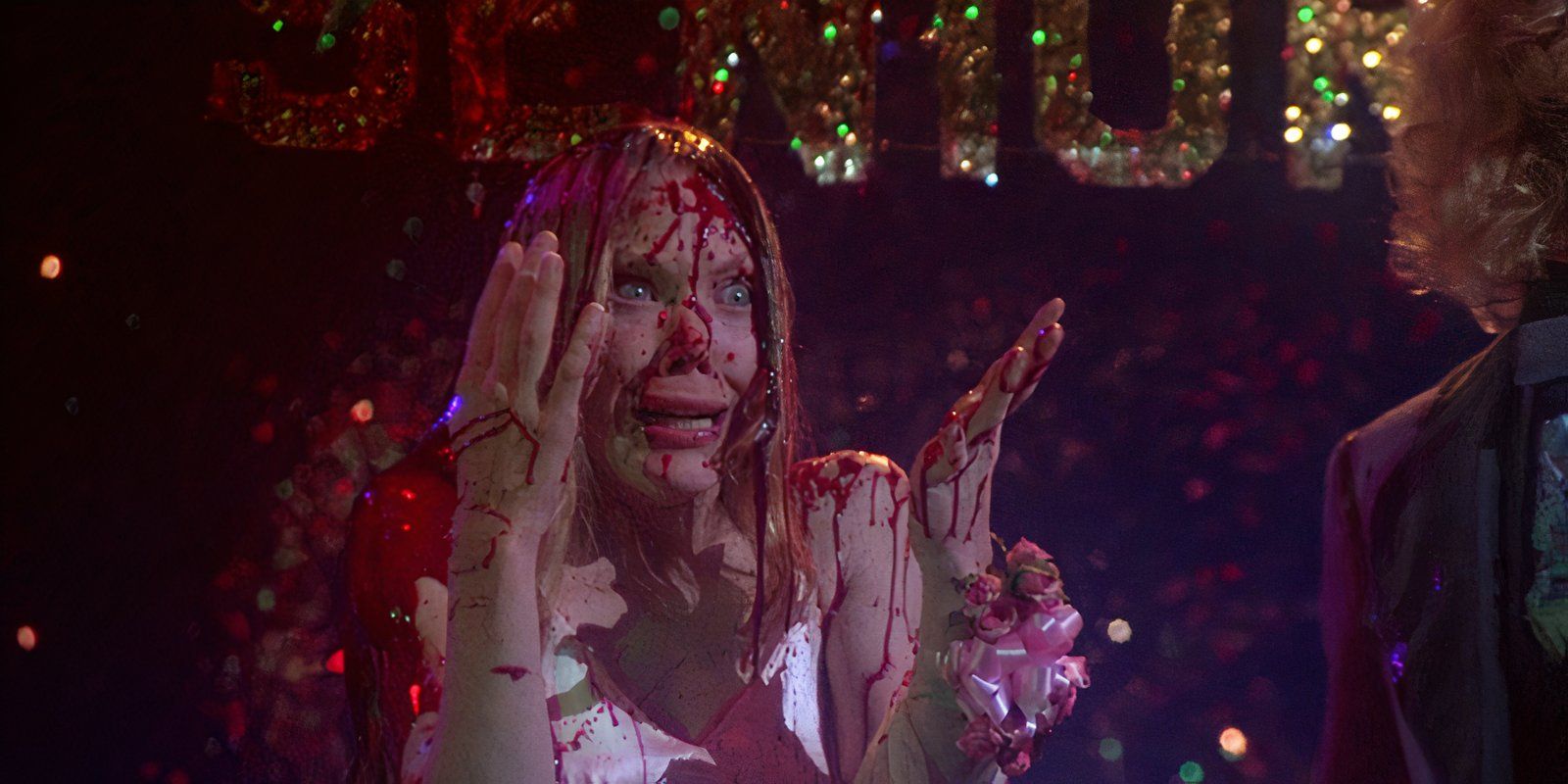


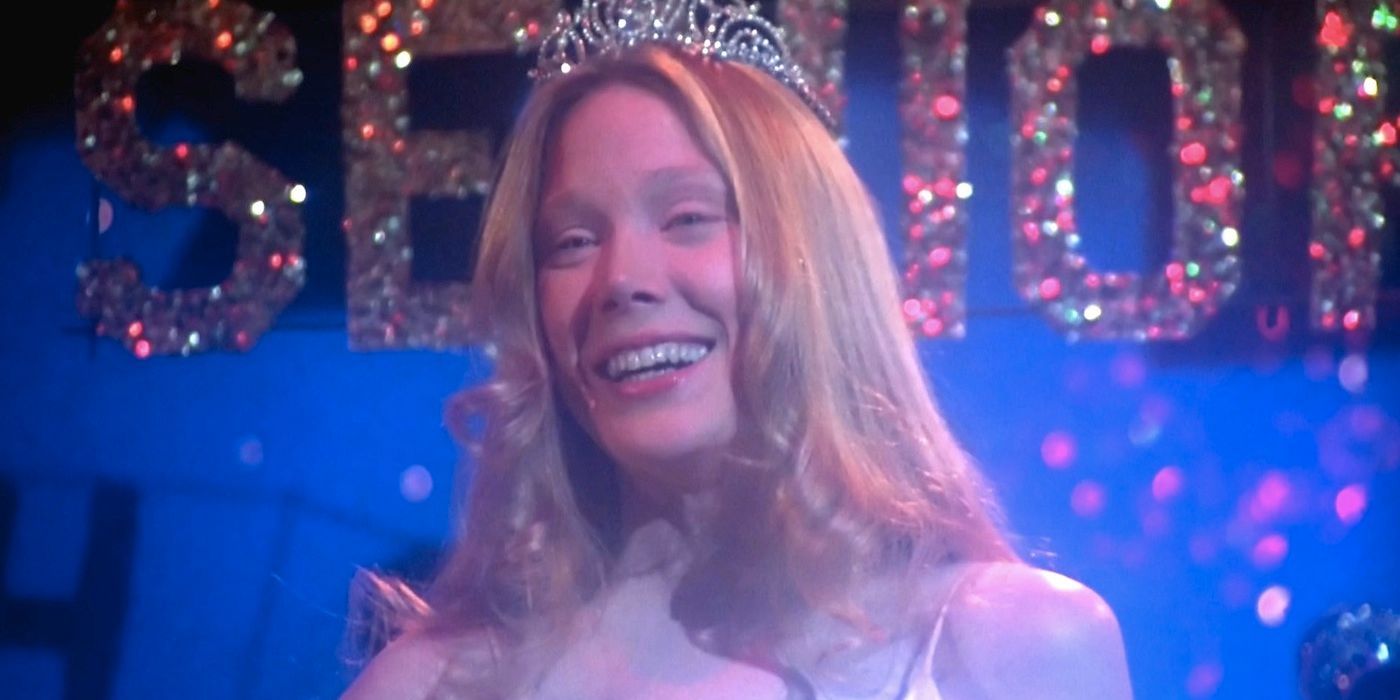
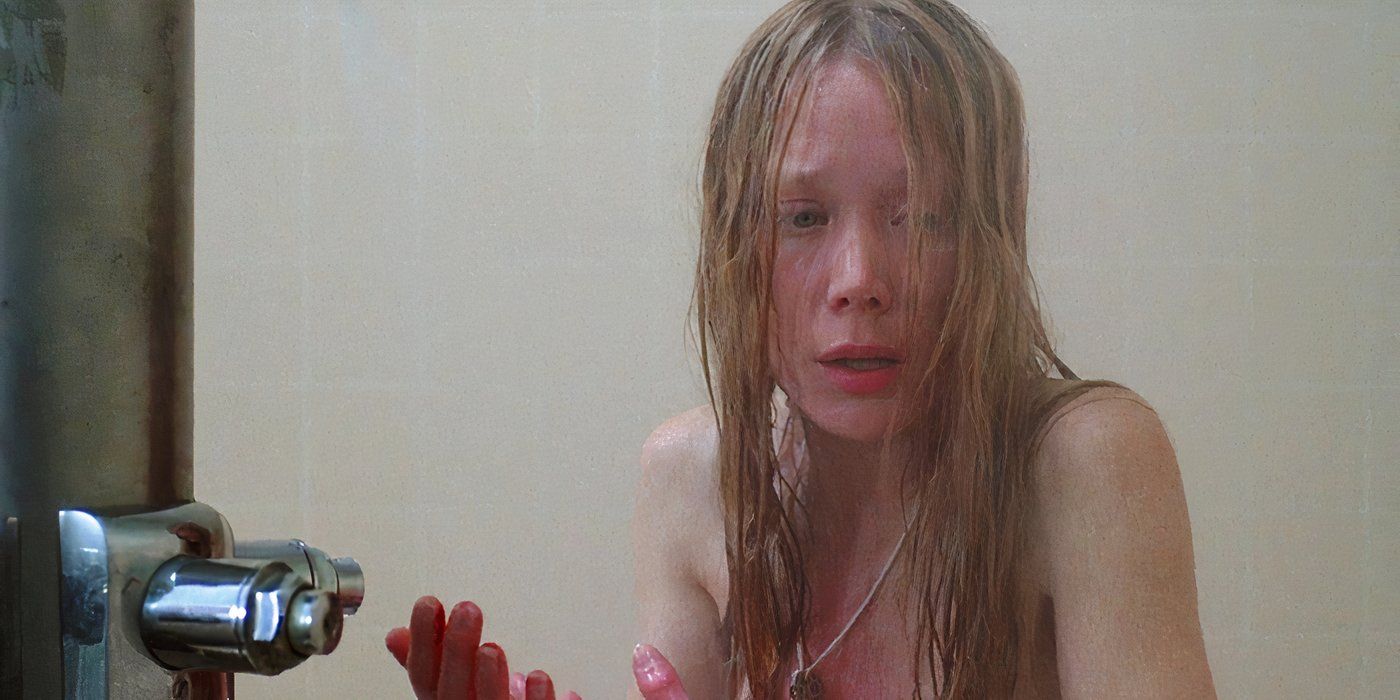
People who haven’t watched Carrie or read the book might still have a mental picture of Carrie, as prom queen, drenched in blood. This iconic scene from De Palma’s film is undeniably captivating, but the conclusion of Carrie offers much more depth. In the story, some popular students at Carrie’s school manipulate the voting process to make her prom queen with the intention of dumping pig’s blood on her. It’s a moment that makes Carrie feel accepted by her peers, but it ultimately results in her being soaked in blood.
Carrie, taken aback by the harsh prank, remains speechless for a moment. But when she spots Norma and other students giggling, she experiences a hallucination where she believes the entire gymnasium is mocking her. In response, Carrie, using her psychokinetic abilities, blocks the exits in the gym. She then activates a fire hose, causing mayhem within the enclosed area, and eventually electrocutes some teachers and ignites the gym while walking away silently. This incident likely results in the deaths of most teachers and students trapped inside.
As Carrie heads home, she narrowly escapes being hit by Chris and Billy, but in turn, causes their vehicle to crash and detonate, instantly taking their lives. Back at her house, Carrie cleans off the blood from her body, but is swiftly confronted by her mother, Margaret. Despite being stabbed in the back by a kitchen knife, Carrie fights back using her powers, repeatedly impaling her mother with a collection of knives. With Margaret deceased, Carrie huddles in fear as the house crumbles around her. The movie concludes with a haunting scene of Sue visiting the site where Carrie’s house once stood, only for a hand to emerge from the ground and grab her ankle. However, it is later revealed that this chilling image was merely a dream experienced by Sue.
The Ending Of Carrie Is Different In The Book
De Palma Made A Few Important Changes
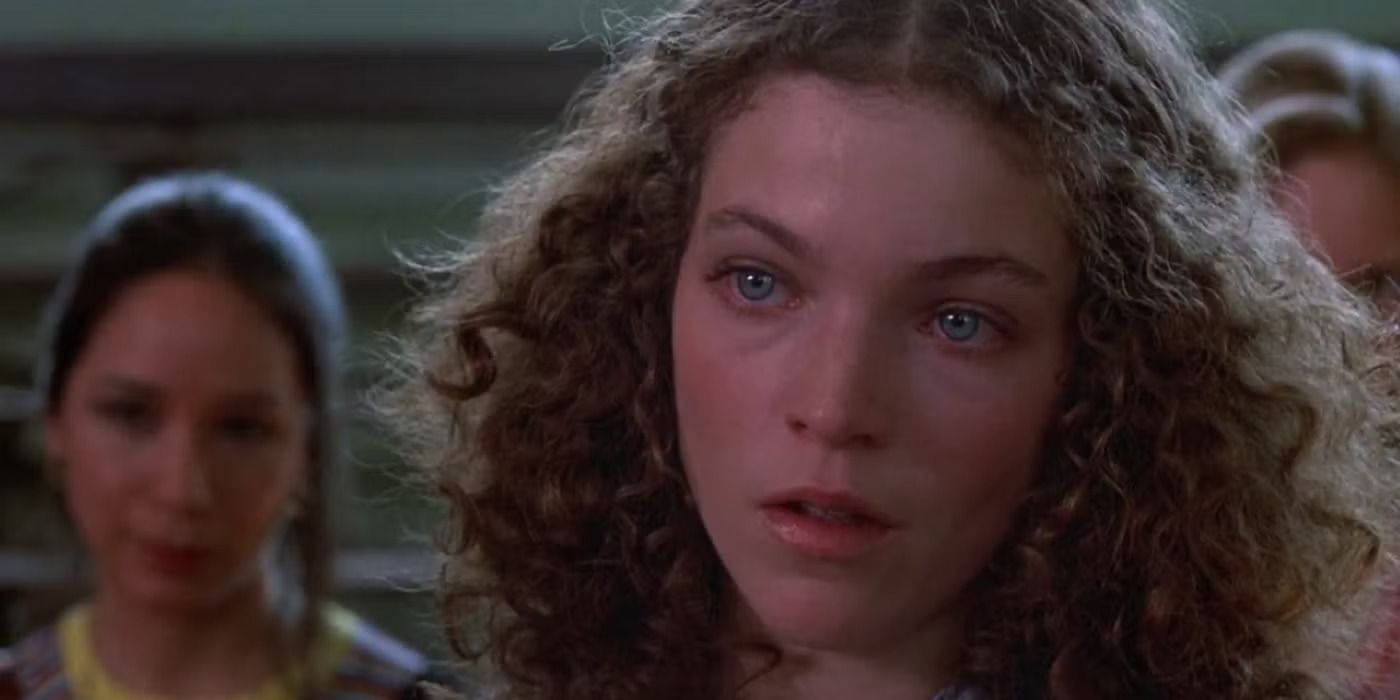
In my view, Carrie generally adheres to Stephen King’s novel, yet Brian De Palma occasionally takes creative liberties, especially at the climax. While in the book, Carrie’s revenge transcends the school boundaries, unleashing her telekinetic fury on the entire town. On her way home from the prom, she not only wreaks havoc on the educational institution but also cuts power lines, floods streets with water from fire hydrants, and even levels several buildings, resulting in a catastrophic death toll. It’s plausible that De Palma toned down her rampage to make her character appear more compassionate.
| How Critics Have Reacted To The Three Different Adaptations Of Carrie | |||
| Movie | Rotten Tomatoes Score | Audience Score | IMDb Score |
| Carrie (1976) dir. Brian De Palma | 94% | 77% | 7.4 |
| Carrie (2002) dir. David Carson | 20% | 49% | 5.4 |
| Carrie (2013) dir. Kimberly Peirce | 51% | 44% | 5.8 |
In the book version, unlike in the movie, Carrie’s actions at the end are slightly altered. Instead of killing Chris and Billy before returning home to confront her mother, she employs her powers to halt her mother’s heart and then departs once more. This leads to a fatal car accident involving Chris and Billy under unique conditions. Additionally, Stephen King provides extensive descriptions of what transpires in the town after Carrie’s demise. The incident gains significant national attention, resulting in numerous deaths being reported. Subsequently, congressional hearings are convened to scrutinize the possibility of individuals with telekinetic abilities like Carrie, while the town gradually empties out.
King offers extensive explanations regarding the beginnings of Carrie’s abilities, contrasting with De Palma’s film which maintains an air of mystery. King delves into scientific nuances about how powers can be inherited through generations and reveals that there are numerous individuals similar to Carrie. A key aspect not present in De Palma’s film is Carrie’s telepathic abilities. In her final moments, she has a telepathic conversation with Sue, uncovering the truth that they were not responsible for the prom prank.
The Real Meaning Of Carrie’s Ending
Carrie’s Trauma Lives On, Even After Her Death
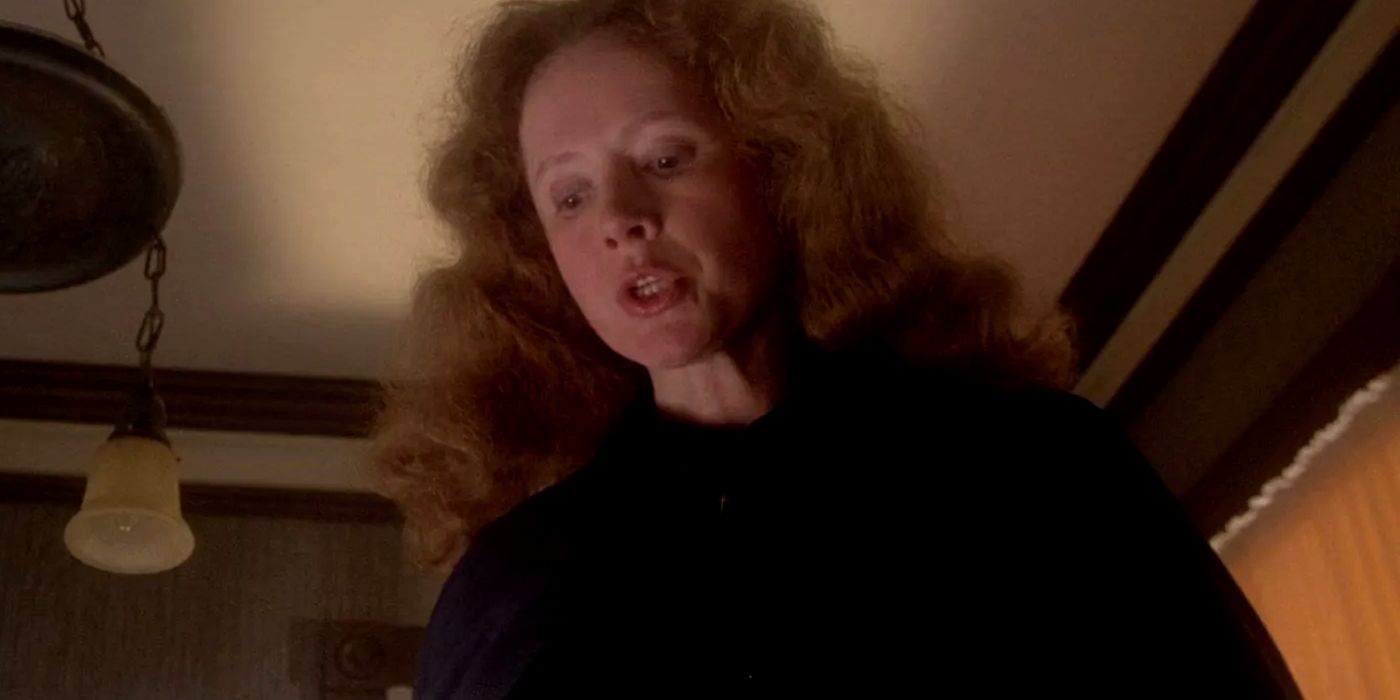
Fundamentally, the narrative of Carrie revolves around themes of abuse, seclusion, and psychological distress. Regardless of De Palma’s alterations to the conclusion, these core aspects remain intact. In many instances, these changes serve as cinematic interpretations of King’s original work. One such example is the portrayal of Margaret repeatedly stabbing herself with knives, her hands spread apart, symbolizing Jesus on the cross, which underscores the religious trauma she imposes upon Carrie. This act serves as a vivid manifestation of the destructive teachings she has instilled, making it a more impactful and thematically deep scene compared to how Carrie stops her mother’s heart in the book.
As a movie enthusiast, I find Carrie’s rampage to be more than just a bloody retaliation against those who tormented her; it’s a chilling manifestation of the deep-seated pain she endured. When Carrie was bullied at school and mistreated at home, her telekinetic powers became her means of regaining control over her oppressors. However, this is not just a horrifying or senseless massacre; it’s a profound demonstration of the devastating effects of unresolved trauma. Regrettably, even innocent people become casualties in Carrie’s path of destruction. This tragic scenario serves as a stark reminder of how untreated trauma can escalate and morph if left unaddressed.
From a cinephile’s perspective, delving into the climax of ‘Carrie’, I can’t help but ponder over the poignant dream sequence that Stephen King didn’t pen in his novel. Yet, Brian De Palma masterfully included this haunting coda to amplify the film’s underlying themes. The chilling scene where Carrie’s hand emerges from the wreckage of her house, gripping Sue’s ankle, symbolizes how her pain lingers beyond her mortal existence. Sue, who bears the weight of witnessing her peers perish and grapples with the burden of her role in tormenting Carrie, becomes a vessel for this cycle of trauma. Her efforts to atone may have been sincere, but they came too late.
Read More
- Who Is Harley Wallace? The Heartbreaking Truth Behind Bring Her Back’s Dedication
- 50 Ankle Break & Score Sound ID Codes for Basketball Zero
- Basketball Zero Boombox & Music ID Codes – Roblox
- 50 Goal Sound ID Codes for Blue Lock Rivals
- Summer Games Done Quick 2025: How To Watch SGDQ And Schedule
- LINK PREDICTION. LINK cryptocurrency
- Revisiting Peter Jackson’s Epic Monster Masterpiece: King Kong’s Lasting Impact on Cinema
- 100 Most-Watched TV Series of 2024-25 Across Streaming, Broadcast and Cable: ‘Squid Game’ Leads This Season’s Rankers
- The best Easter eggs in Jurassic World Rebirth, including callbacks to Jurassic Park
- TikToker goes viral with world’s “most expensive” 24k gold Labubu
2025-05-26 16:19